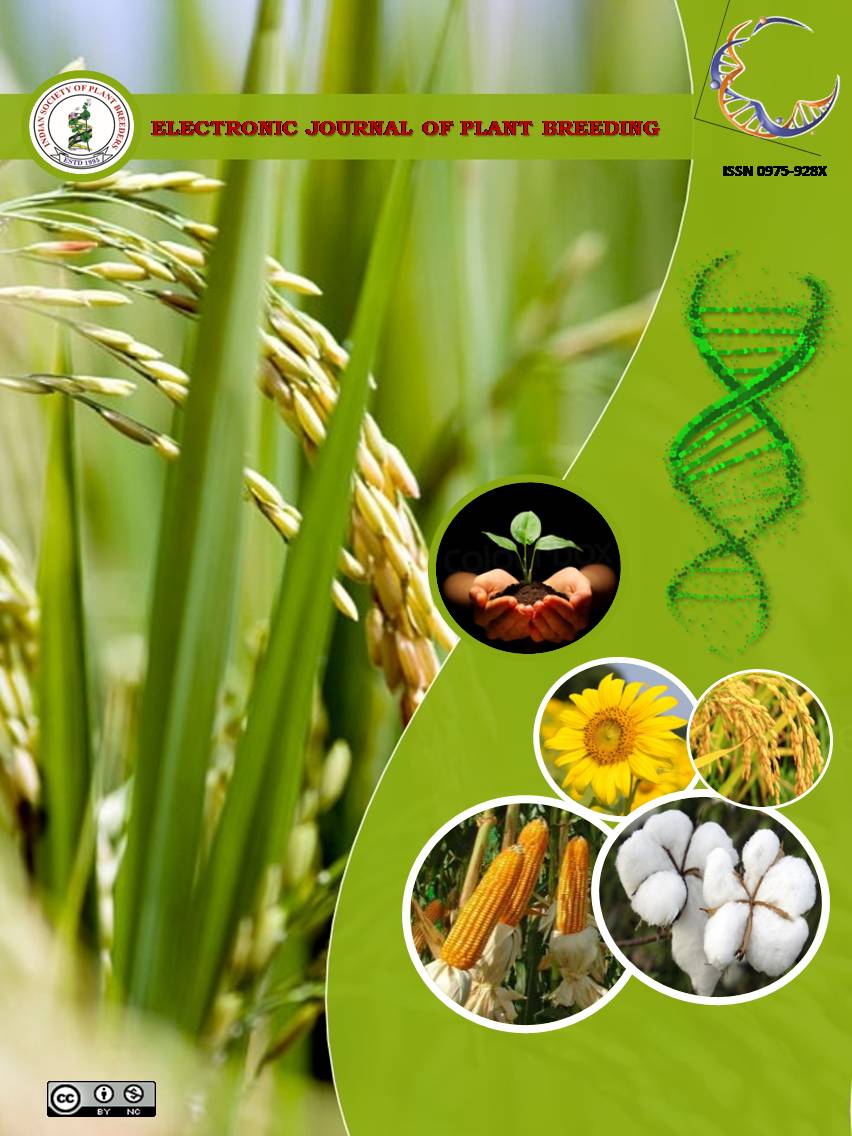Genetic studies on F3 population of bread wheat [Triticum aestivum L.] for yield and its components traits
Abstract
The F3 population of 22 wheat genotypes for 14 traits was evaluated at Agriculture Research Farm, Lovely Professional University, Punjab, during rabi, 2020-21. ANOVA revealed highly significant variation among all the traits studied. According to GCV and PCV grain yield per plant, harvest index, ear weight, test-weight, the number of productive tillers per plant and the number of grains per ear were found to be high (>20). High heritability (>60) and GA% (>20) of mean were observed for grain yield per plant, biological yield per plant, test-weight, the number of ears per plant, the number of productive tillers per plant, the number of grains per ear, the number of spikelets per ear, ear weight, harvest index. The number of productive tillers per plant, biological yield per plant and harvest index exhibited a significant positive correlation and path direct with grain yield per plant. Thus, the above mentioned traits are additive genetic control and direct selection in wheat has good potential for improvement in grain yield.

